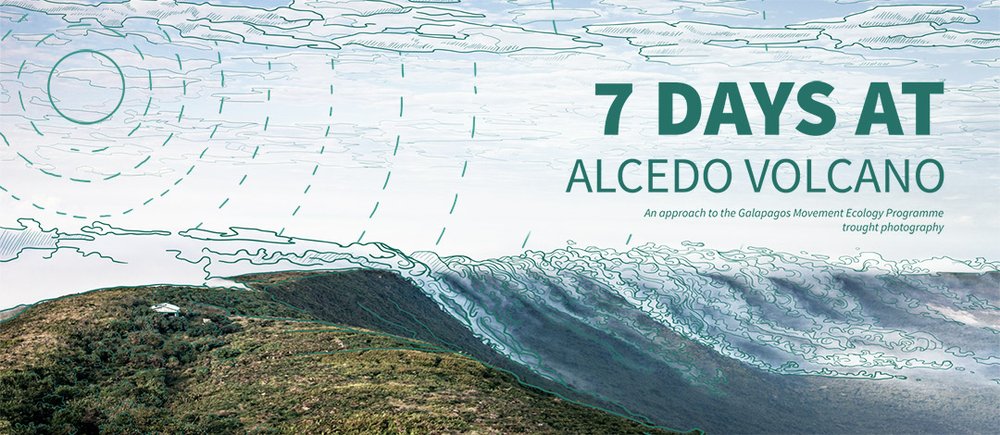
Giant tortoises have disappeared from almost every corner of the world, and currently, they are the most threatened group of vertebrates according to El Comercio. Although it might sound bizarre, this kind of reptile once inhabited several continents. However, an IBS special issue corroborates the rapid decline of tortoises' population since the Pleistocene. Nowadays, we can only find them free on the Galapagos Islands and on the Aldaraba Archipelago. Human beings and the species we have introduced into their habitats are their main threats.
Biologists, park rangers, veterinarians and many others work for the conservation of the world's biggest land reptile. As part of the Galapagos Tortoise Movement Ecology Programme (GTMEP), eight people traveled to the Alcedo Volcano with the endeavor to gain a better grasp of this species' health. Ainoa Nieto Claudín, veterinarian and researcher of the Charles Darwin Research Station, invited me to be part of the team as a photographer. Through my camera, I wasn't only determined to document the programme efforts, but also decided to widen a conservation message taking this remote paradise as an example. Especially now that digital platforms have assumed significant roles in communicating and images convey through them.
This expedition was led by Dr. Sharon L. Deem, director of the Institute for Conservation Medicine at the Saint Louis Zoo and member of the GTMEP. This program is a multi-institutional collaboration among the CDF, the Max Planck Institute of Ornithology, Galapagos National Park Directorate, Saint Louis Zoo Institute for Conservation Medicine, the Houston Zoo and the Galapagos Conservation Trust.
01.- THE TEAM
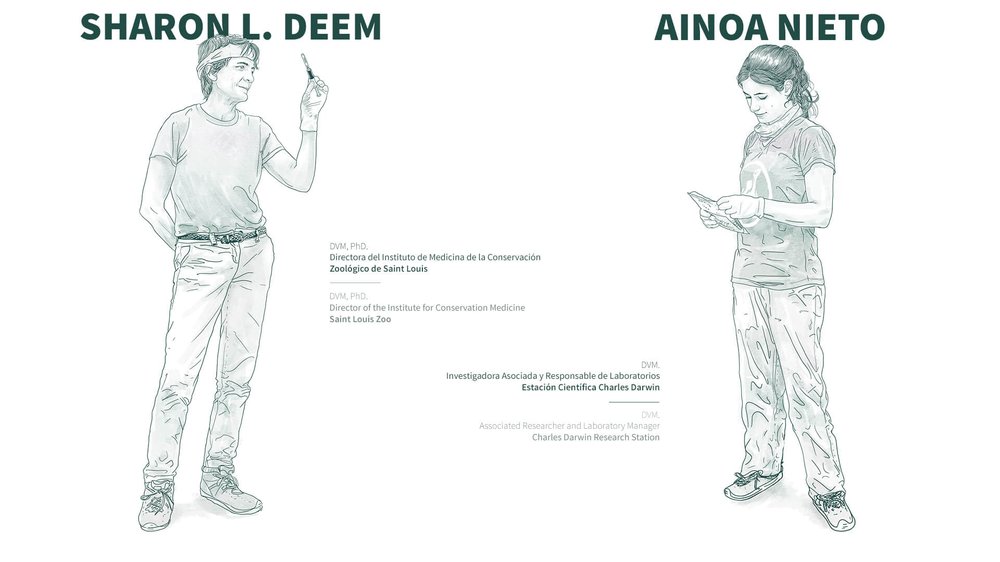
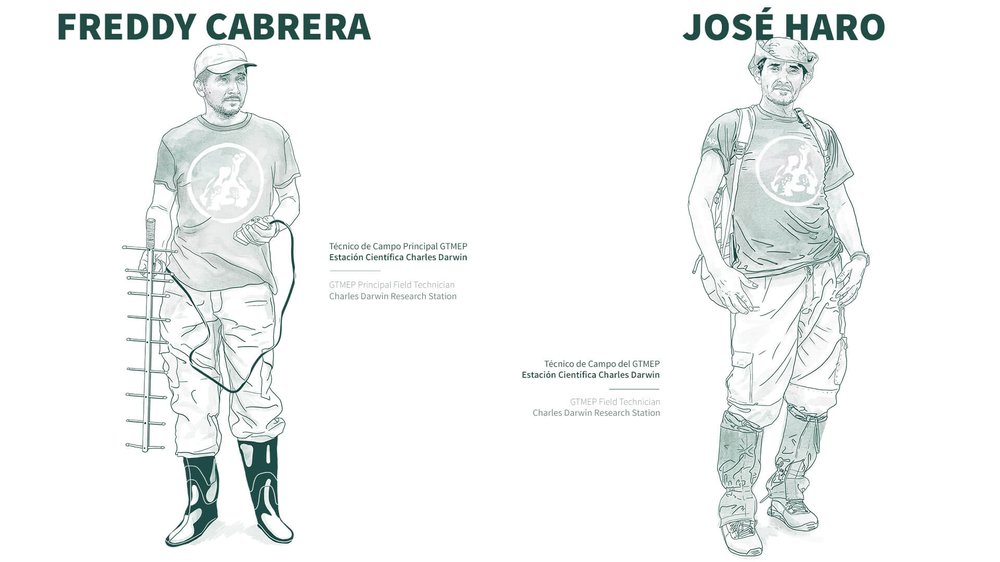
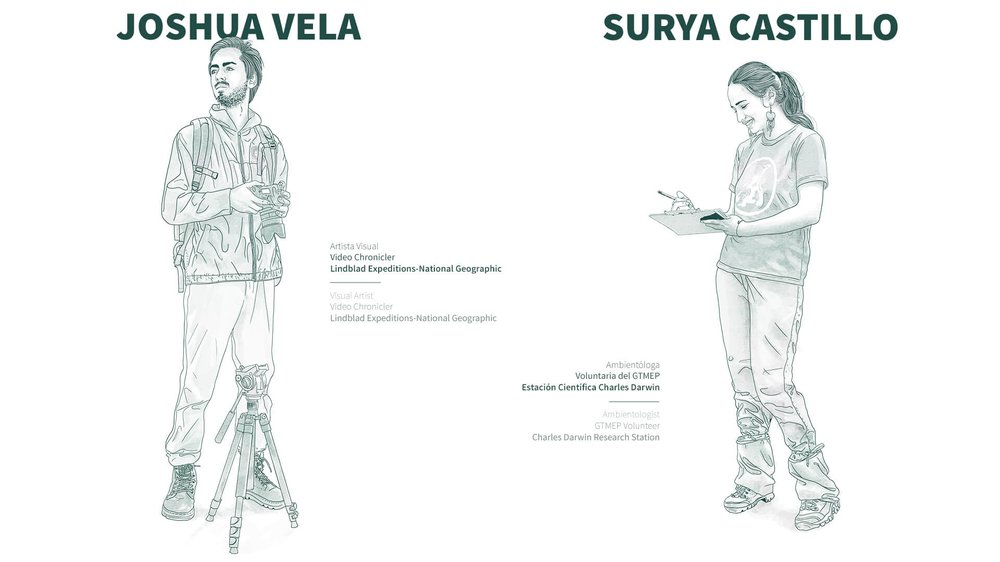
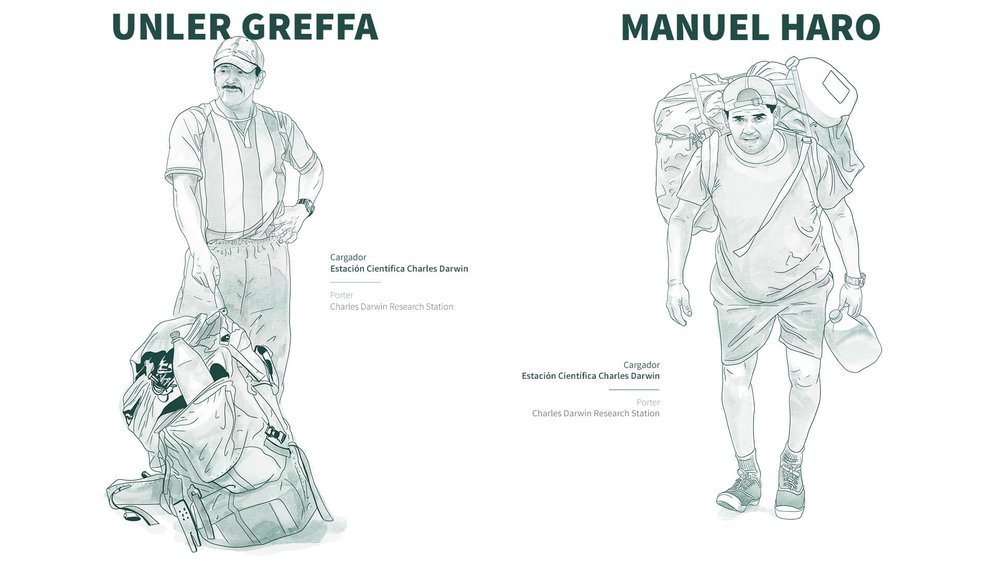
02.- BACKGROUND
The expedition's aim consisted of taking thoroughgoing health samples of 70 giant tortoises of the Chelonoidis vandenburghi species, and furthermore, collect information of the past 11 tortoises that were tagged and have been tracked for the past 8 years. The purpose is to better understand this species' health that lives in a remote location and contrast the data with other tortoises that live within human-inhabited islands.
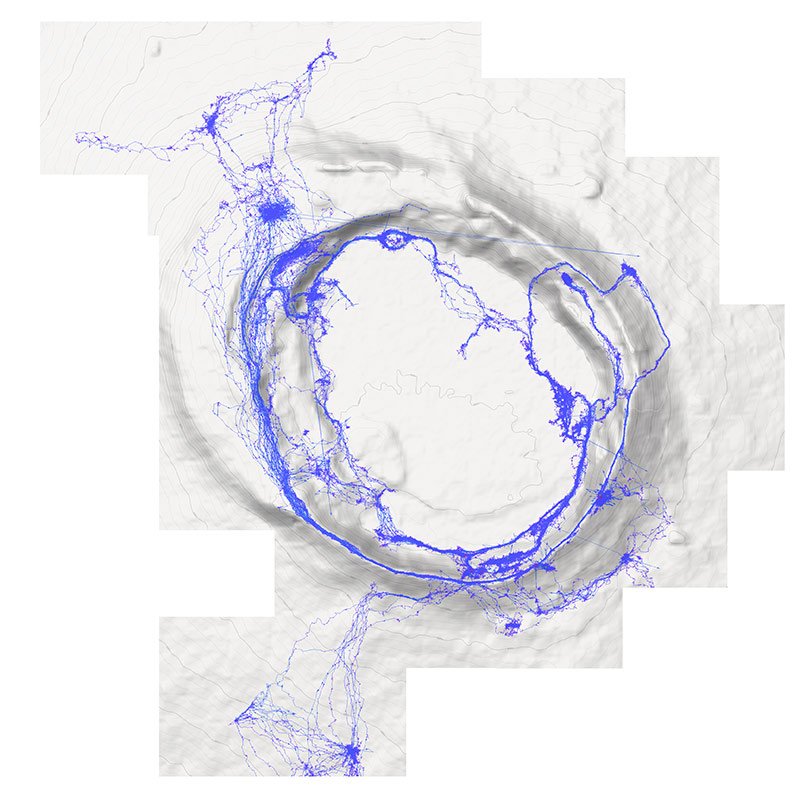
It was disturbing, as a Galapagueño, to learn the massive population decline of the species that gave the name to the archipelago. There used to be hundreds of thousands of giant tortoises back in the 1600s, and in the 1970 census, there were counted only 3,000 Galapagos tortoises. Today there are more than 26,000 individuals and Alcedo has been one of their most successful environments with around 8,000 tortoises. Its fame has spread tales of the volcano's ecological paradise. Some people are fascinated by their surreal landscapes, fauna, and it's been said that tortoises there are as big as Volkswagen Beatles.
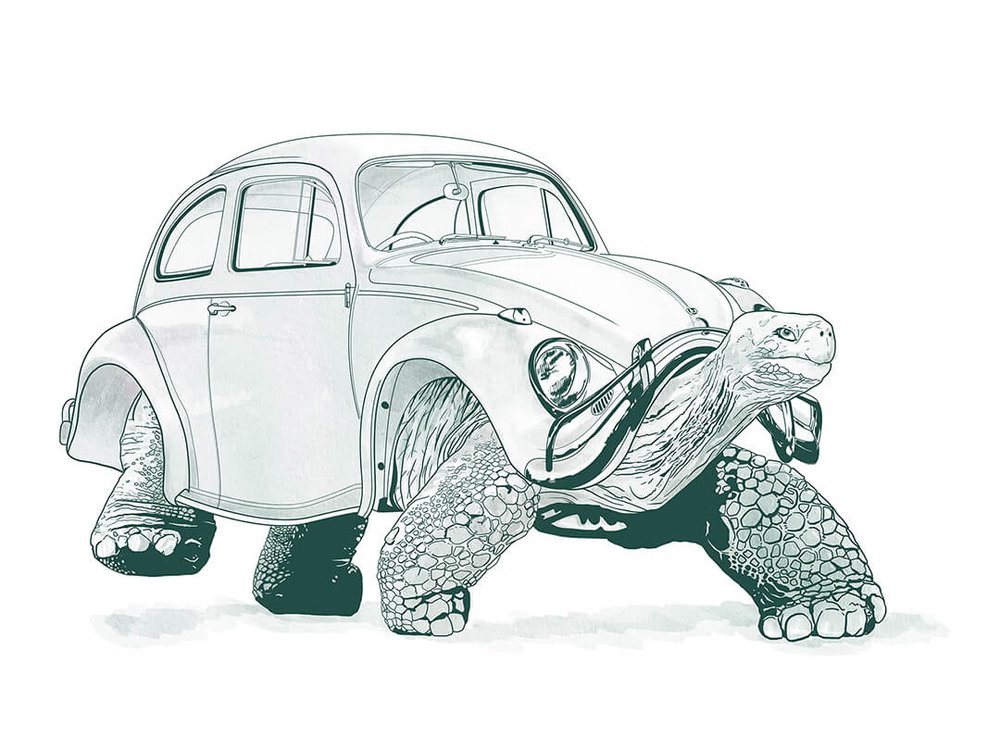
03.- THE EXPEDITION
The expedition took place from the 17th until the 23rd of July of 2018.
Now, I'm going to share the expedition's chronicles through my photographs, illustrations, and extracts of my voyage diary's entries.
03_1.- DAY ONE
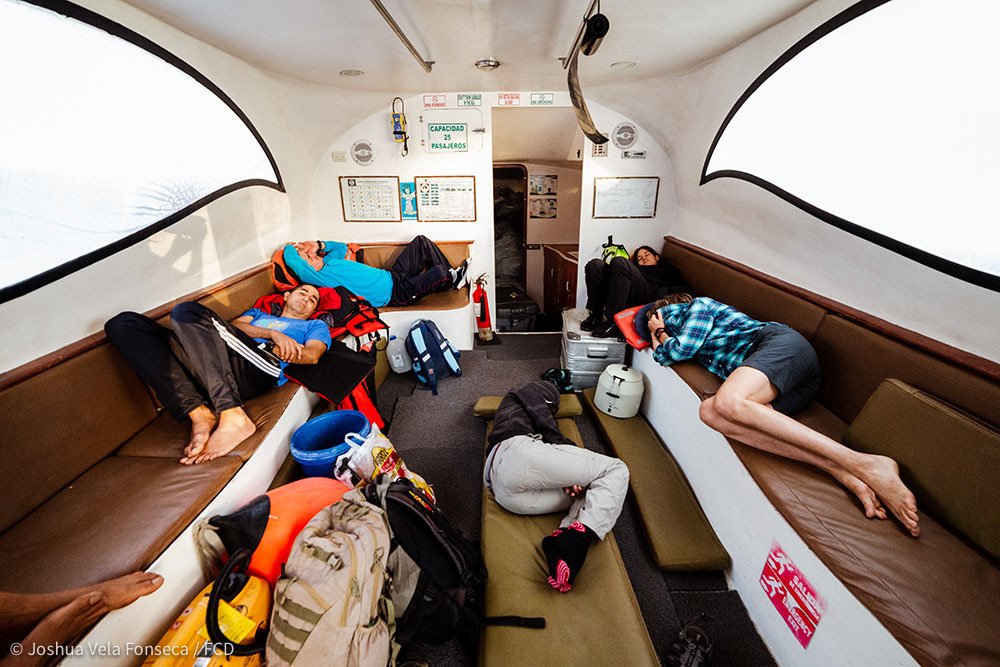
The ascent to the crater took us seven hours. It felt like visiting seven countries at once; the continually changing vegetation served as an indicator of each zone we were passing and multiple of the volcano's micro-ecosystems.

Log entry – July 17th, day one - 17h03:
"We just arrived at the 'Linda J. Cayot' camp in an altitude of 1.170m of height. It took us seven hours and ten minutes. I have never felt so much pain in my body. The good thing is that, while I focus on my feet, I forget my shoulder's pain. Even so, I would do it again without hesitation."
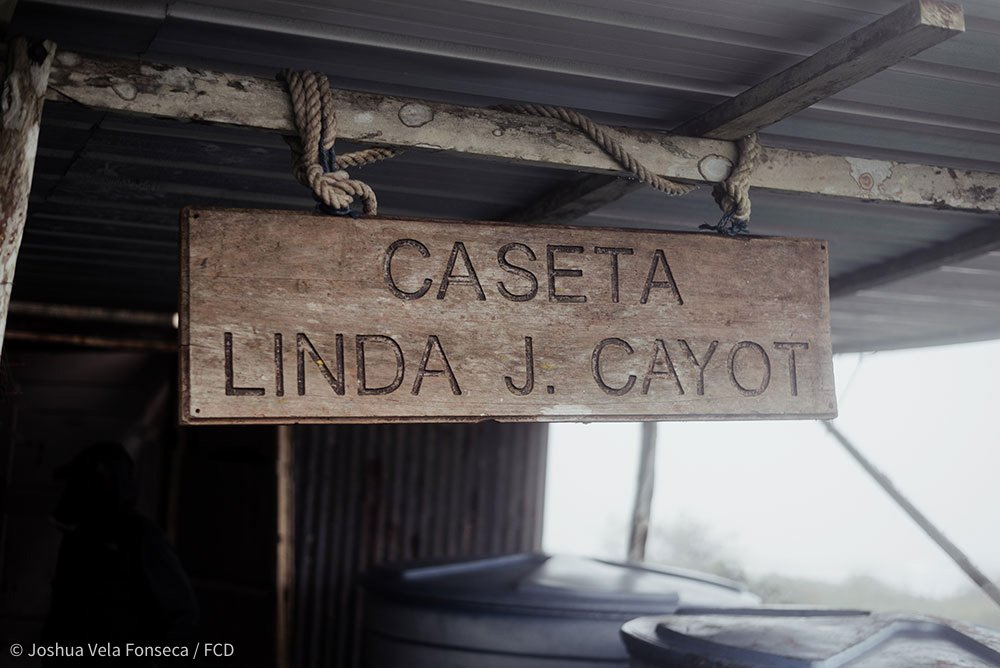
That night we were supposed to sleep like babies...
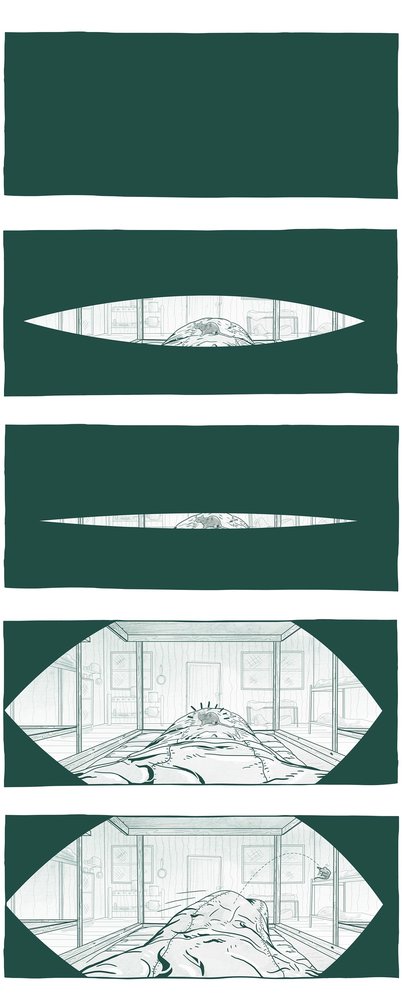
Log entry – July 17th, day one - 23h42:
"A rat got on the sleeping. I can't sleep more."
03_2.- DAY TWO
Next day, and with our batteries charged back, we started the field work.
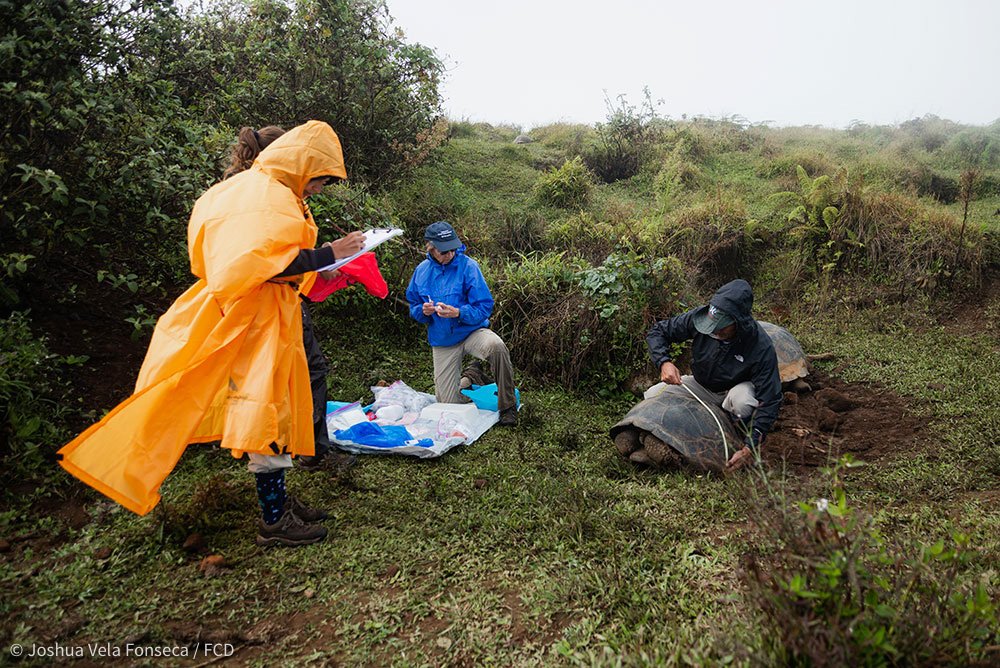
Log entry – July 18th, day two - 09h22:
"It has been only fifteen minutes since we left the camp and we can finally see the crater cloudless. Besides, a Vermilion Flycatcher and two Galapagos Hawks came close. This is amazing. P.S. I didn't bring the 500mm because of the weight. I have a 50m f1.4, a 14mm f2.8 and a 24-85mm f.3.6 with me. "
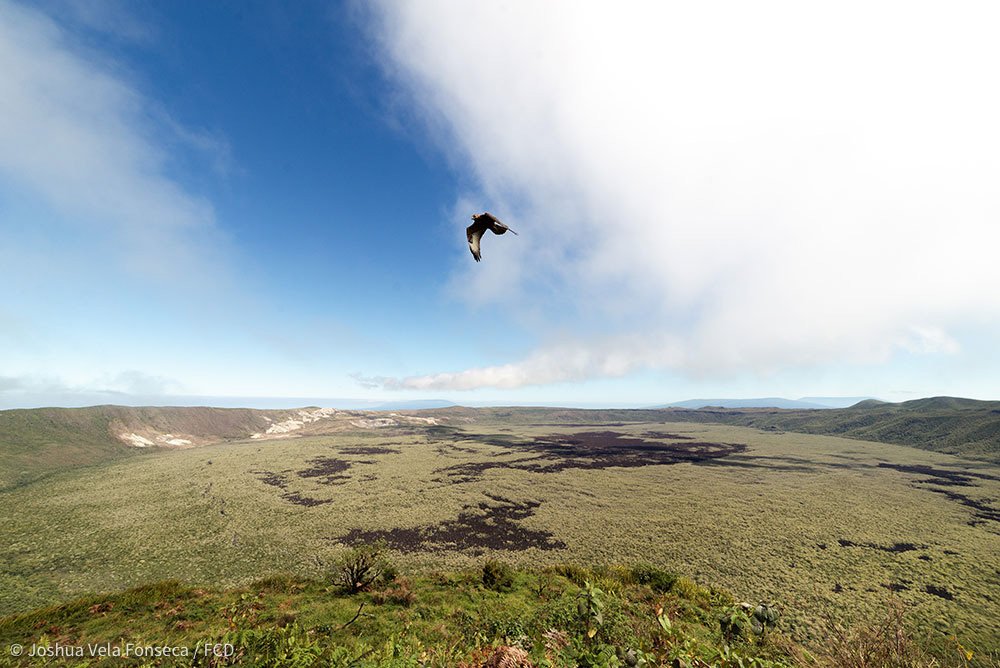
One of the things I remember the most was the amazement of José when he saw the vegetation. As he recalls, when he was part of the Proyecto Isabela, the goats had most of the green swept away, and the landscape was completely different.
The Proyecto Isabela carried out by the Charles Darwin Foundation and The Galápagos National Park between 1998 to 2006, eradicated 135,000 goats from the archipelago's biggest island.
"Goats are one of the most destructive introduced species due to their ease to adapt to hostile environments. They are herbivores quintessential; depredating all kinds of plants, they even feed on trees' cortex, disrupting, in doing so, the habitat of native and endemic species that live on the Galapagos Islands."
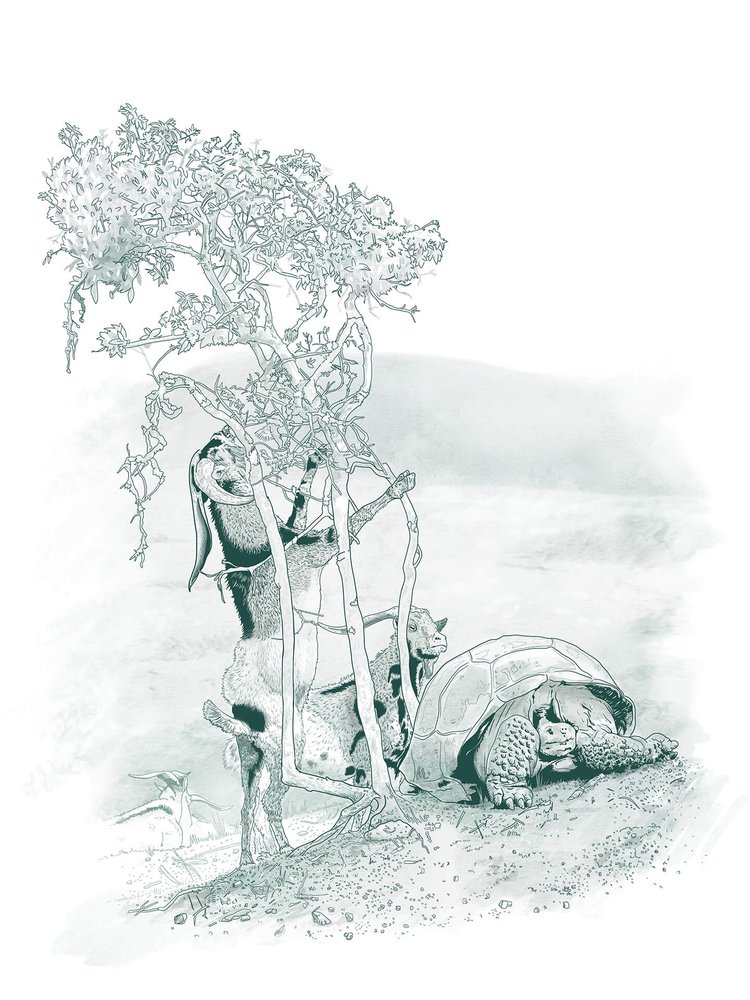
And, as a result, the ecosystem has recovered in an astounding natural response.
I had not seen a Vermilion Flycatcher (Pyrocephalus rubinus) in ten years. Little by little the population had been declining on islands like Santa Cruz or San Cristobal. In Alcedo, this bird's numbers are stable despite the presence of one of their biggest threats: the parasitic fly Philornis downsi.
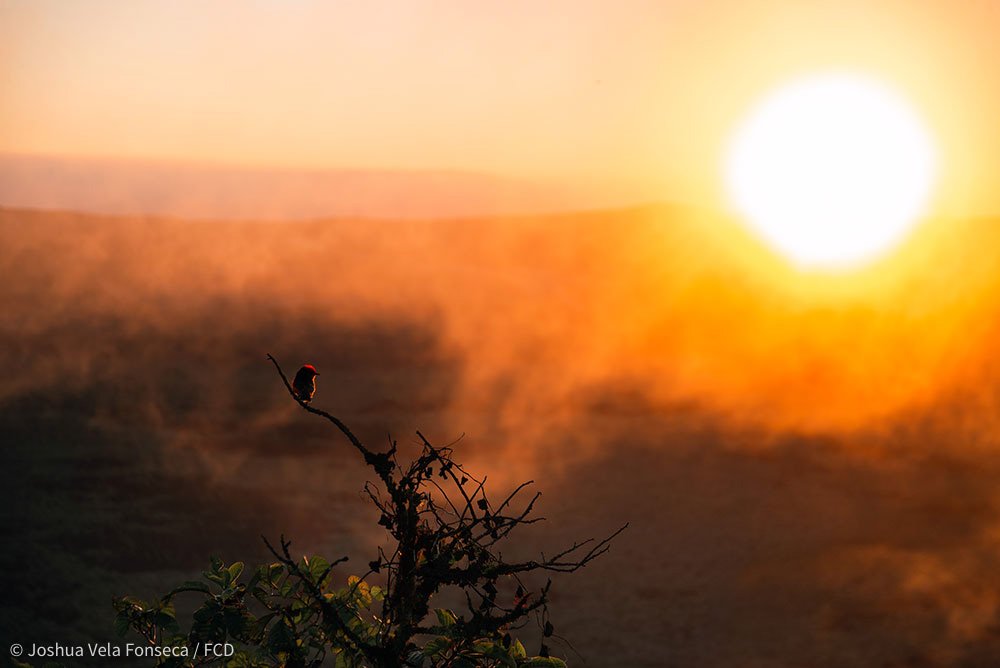
"What makes photography a 'strange' invention is that its primary raw materials are light and time."
- John Berger
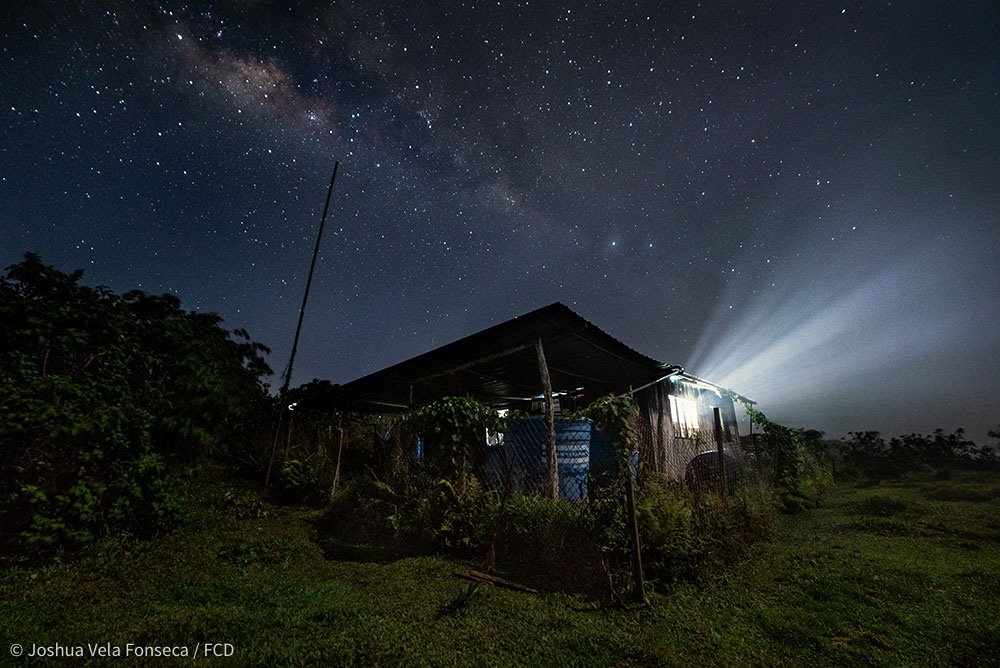
On the camp, the only available energy resource was a fueled electric-generator, which we carried up to the crater, and had the purpose to keep the samples in low temperatures.
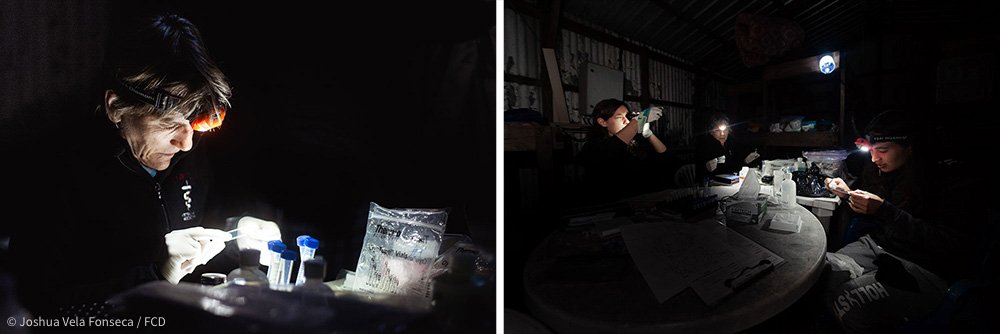
03_3.- DAY THREE.
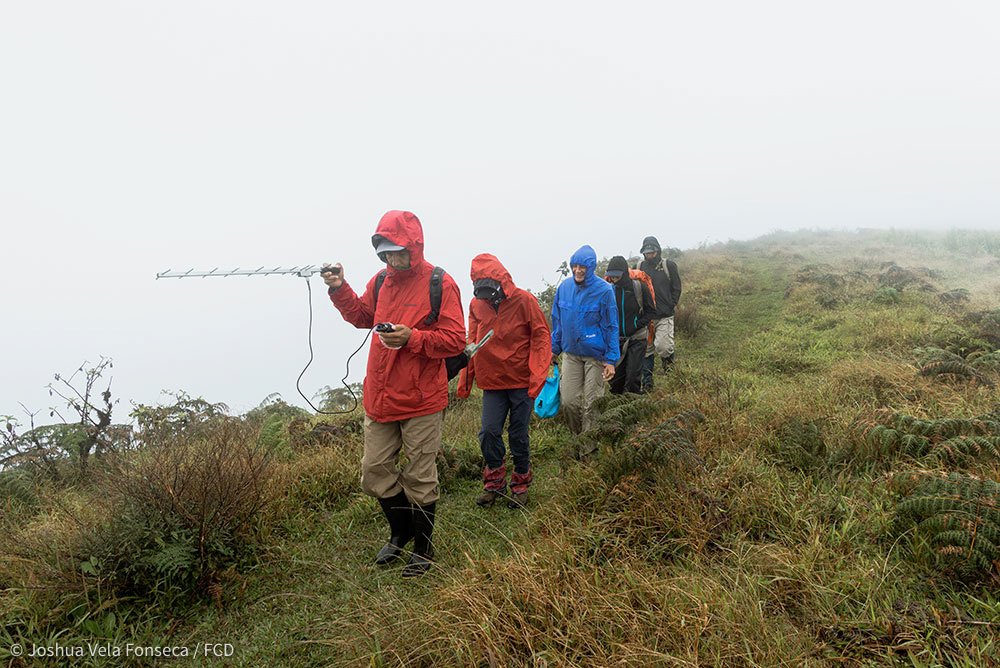
On the third day, Freddy shined with his localization skills. Using telemetry, movement data has been collected over the past eight years. This data has been used to answer many questions such as:
• What are the spatial needs of tortoises?
• How, when, where and why do Galapagos tortoises migrate?
• What factors disrupt movement?
• What habitat resources are critical for survival?
• What are the ecological roles of Galapagos tortoises?
• How are tortoise populations changing over time, particularly in response to management threats and interventions?

I noticed that the same Vermilion Flycatcher laid on the same branch at the same hour. Its behavior was very predictable, and he seemed unconcerned towards us.
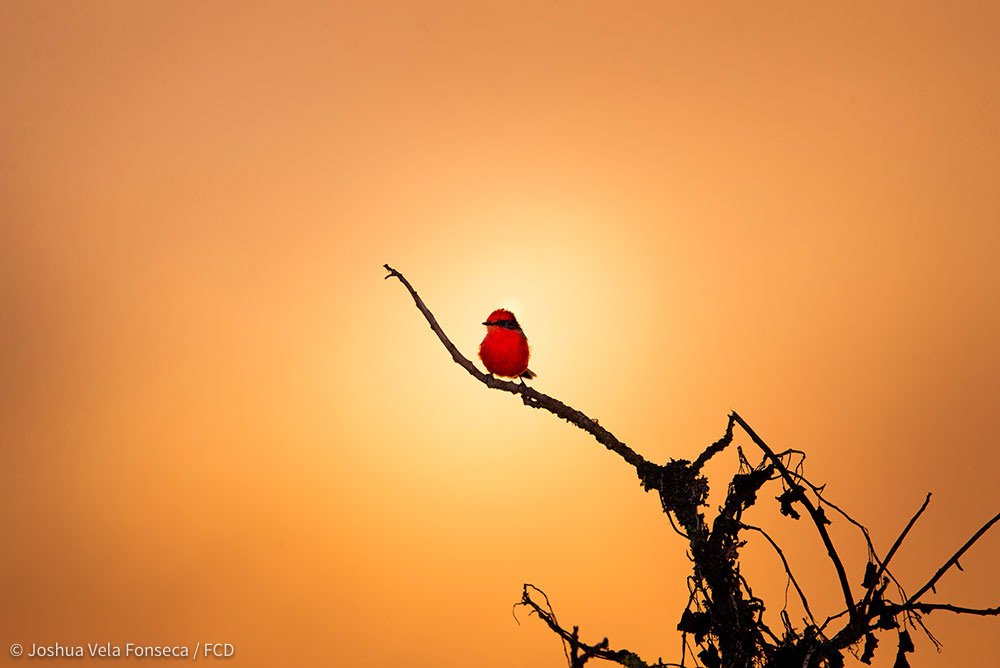
03_4.- DAY FOUR
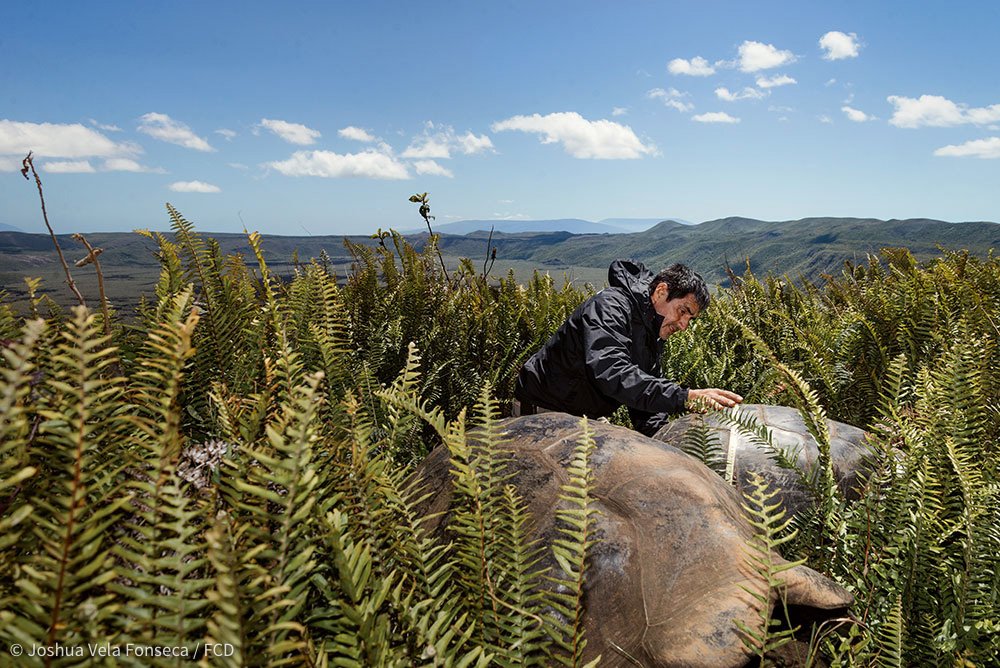
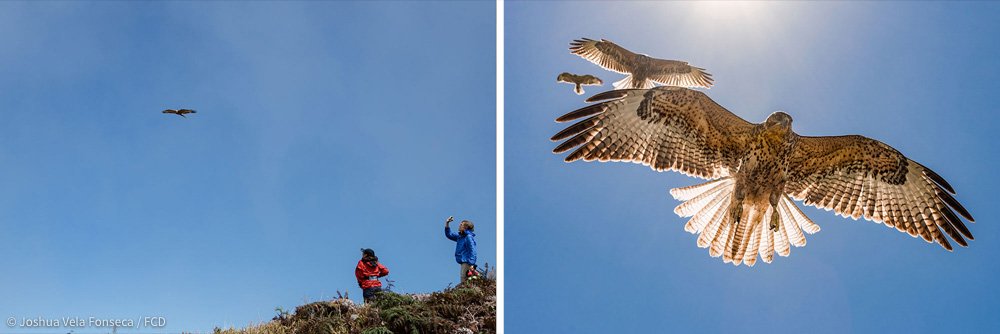
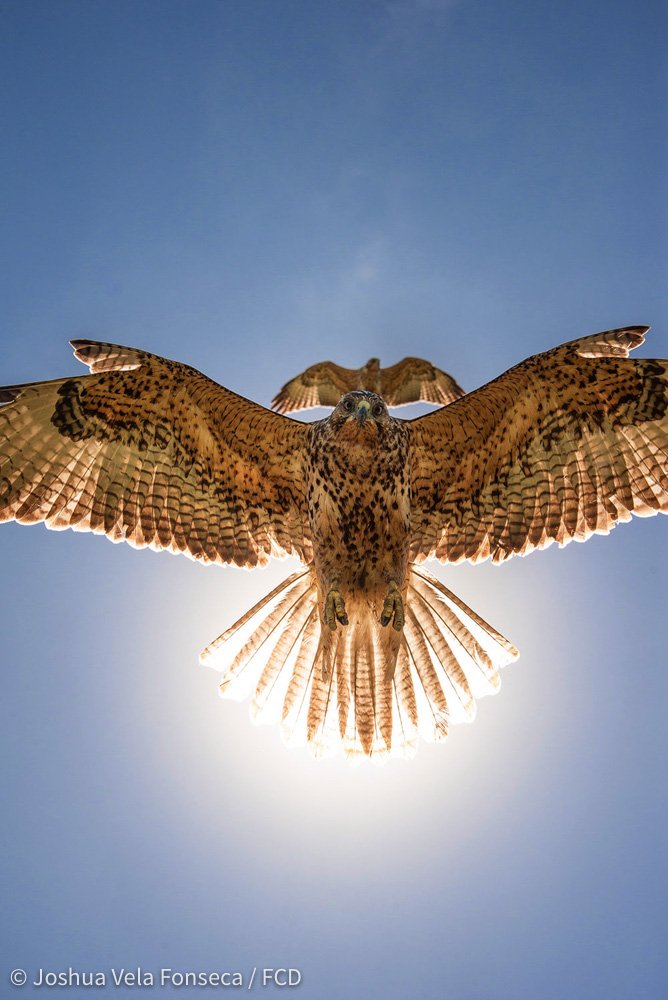
Log entry – July 20th, day four - 14h18:
"I just had a display of at least 15 Galapagos Hawks posing for my camera, then a male tortoise was following me for at least 10 minutes, fighting over its territory like I was another turtle."
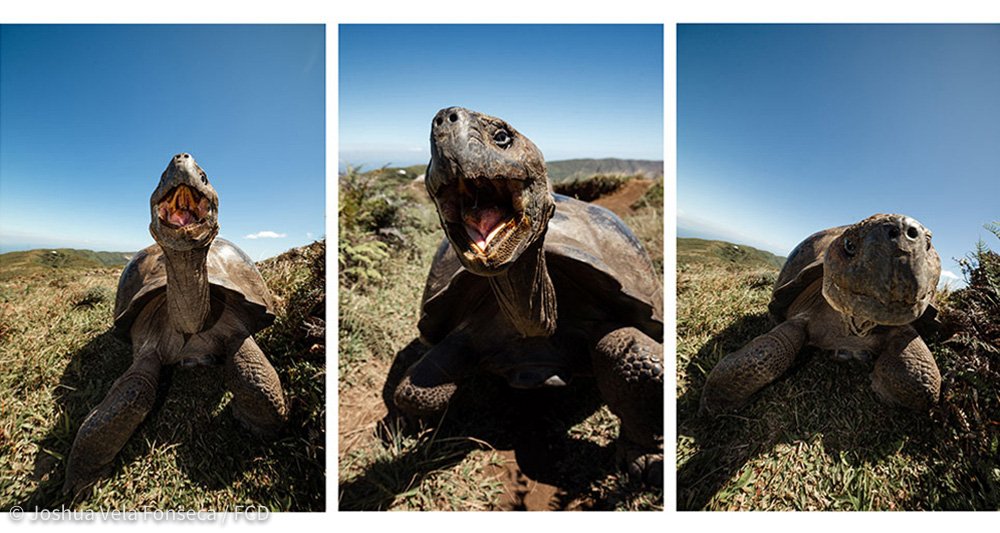
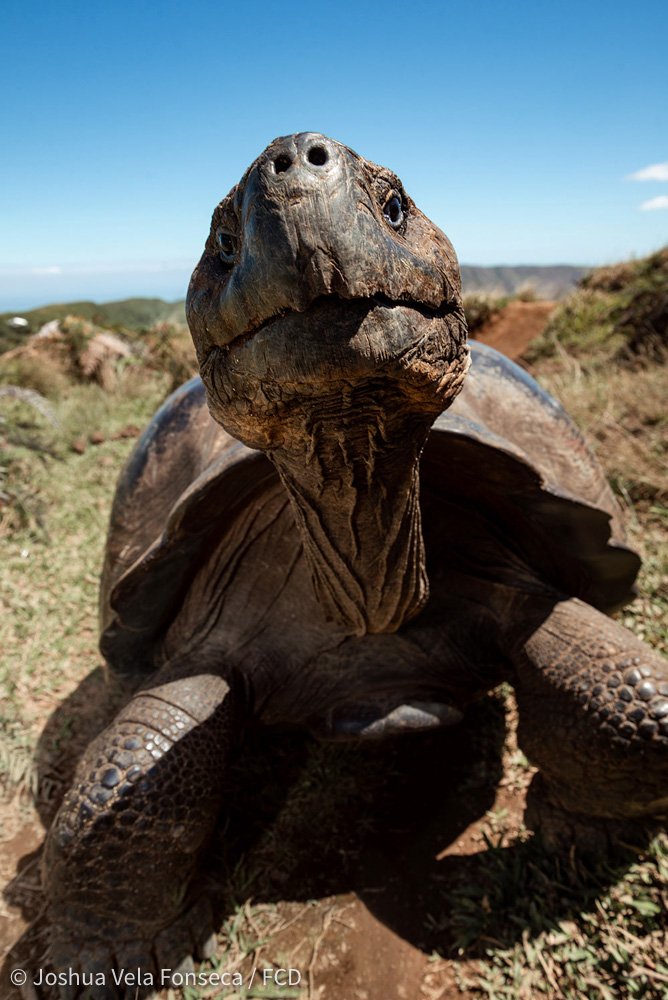
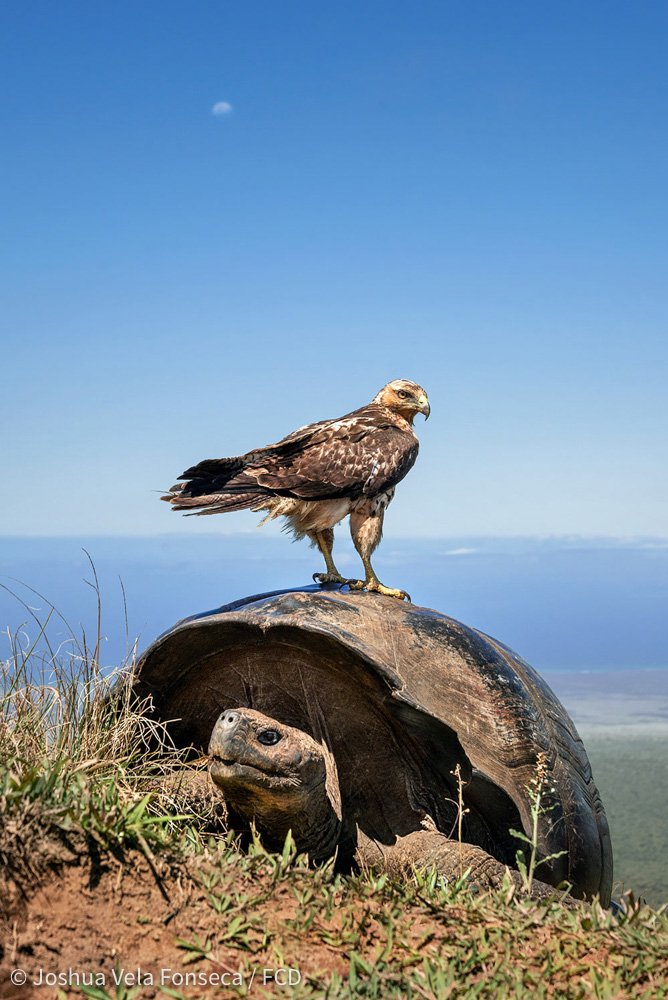
This moment of photographic climax is what Henri Cartier-Bresson would call a Decisive Moment.
"There is a creative fraction of a second when you are taking a picture. Your eye must see a composition or an expression that life itself offers you, and you must know with intuition when to click the camera. That is the moment the photographer is creative (...) Oop! The Moment! Once you miss it, it is gone forever."
-Henri Cartier-Bresson
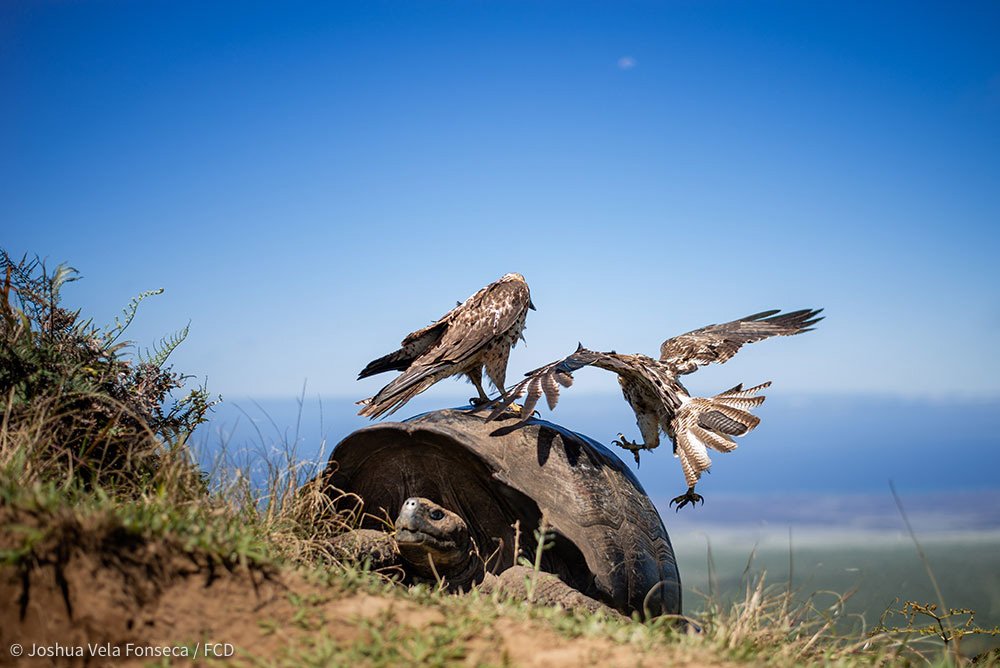
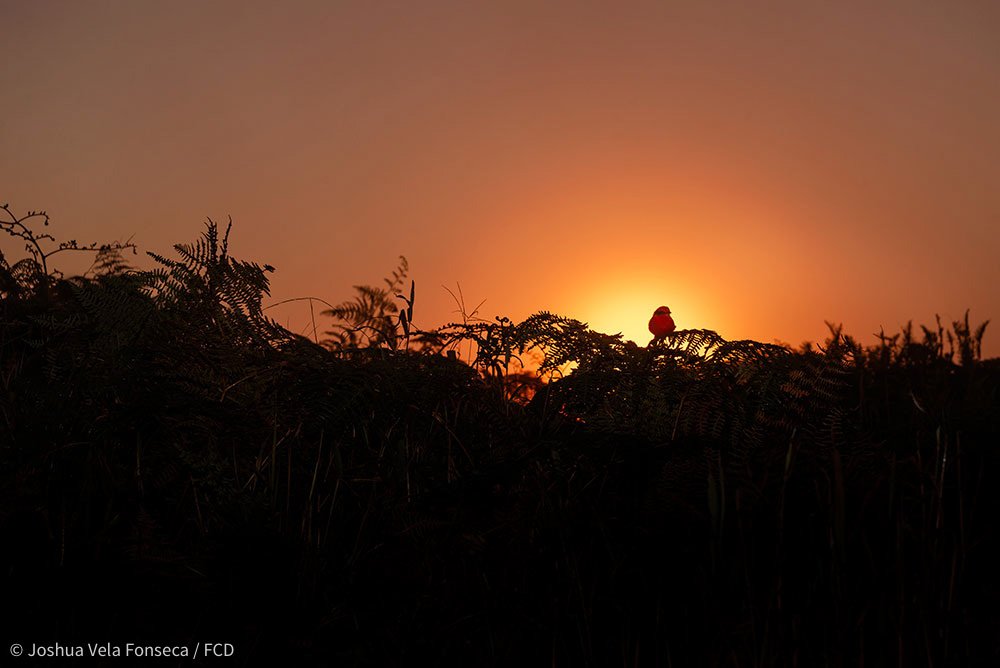
03_5.- DAY FIVE
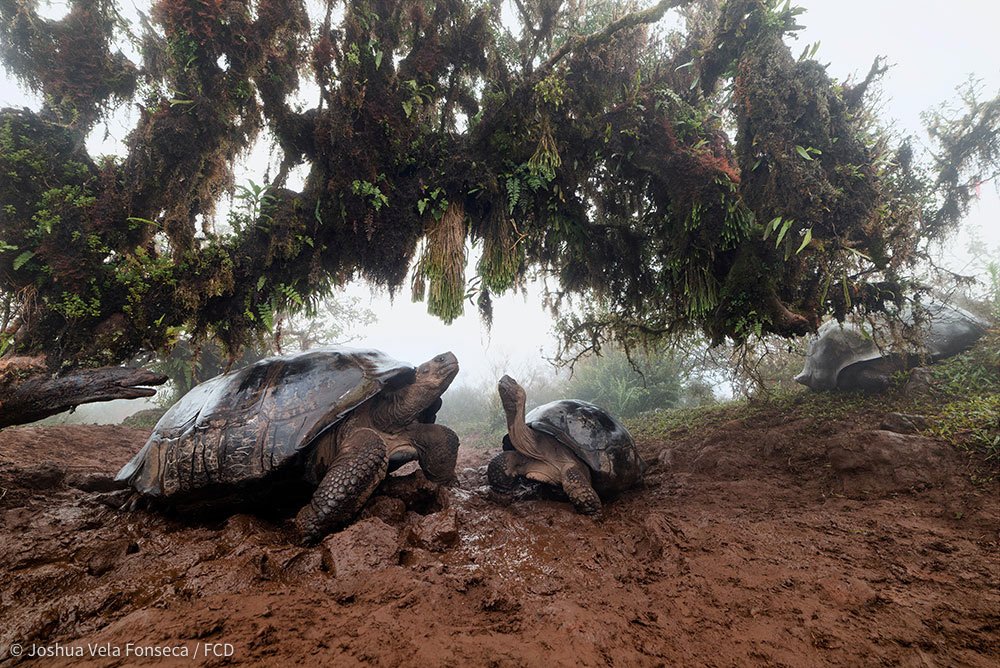
On day five we went to a very humid zone and full of "mud baths" were tortoises spend hours moistening and getting rid of parasites.
Log entry – July 21th, day five - 10h20:
"This place is, without doubt, the most photogenic. Ainoa told me it is known as 'Tui's Spot.'"
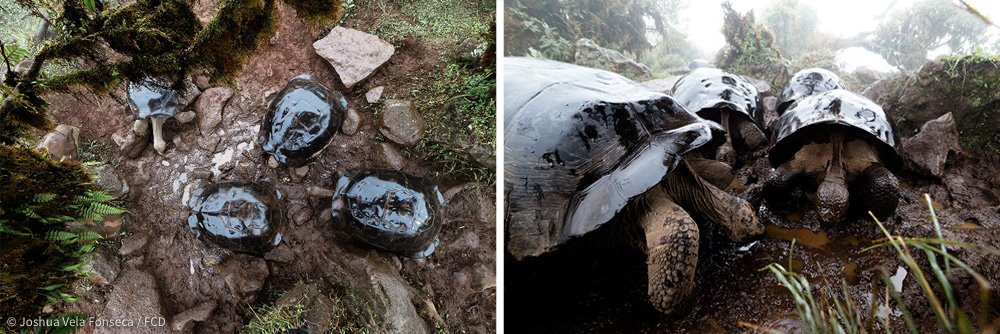
Tui de Roy is immediately recognized as Galapagos's most iconic photographer. She was born in Belgium in 1953 and come to the Enchanted Islands at the age of 12. From an early age, she built a solid career as a naturalist photographer and writer. Tui speaks four languages, she was the first approved by the Galapagos National Park's naturalist guide, she has published several books, and has worked with various local and international ONGs. Furthermore, she is the co-founder of the International League of Conservation Photographers (ILCP) and member of the Charles Darwin Research Station board.
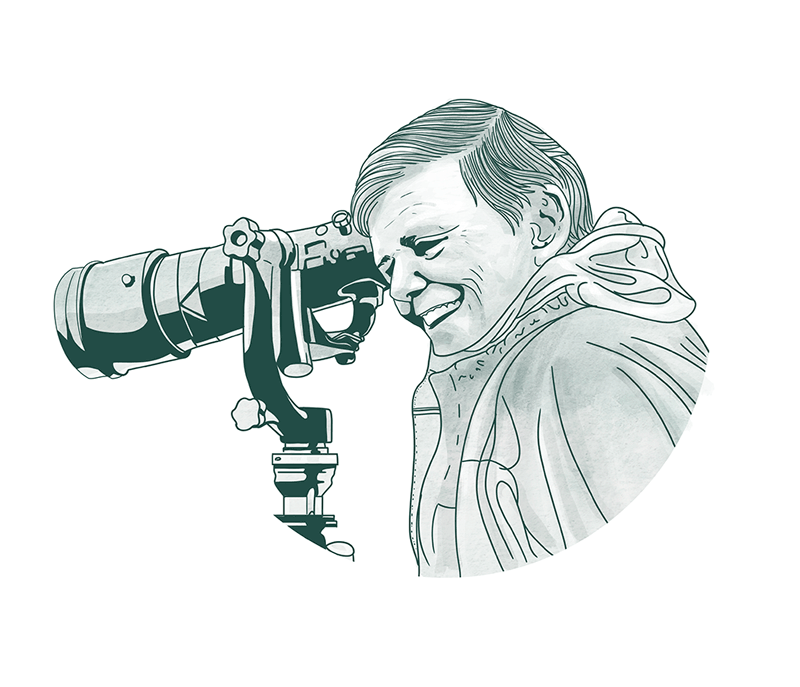
She is a complete inspiration.
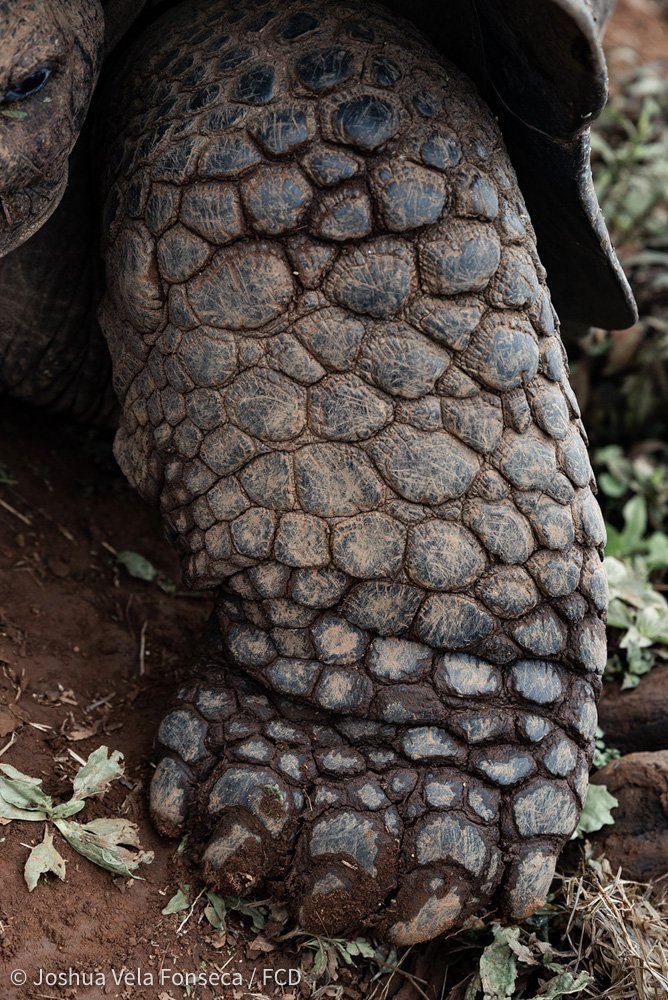
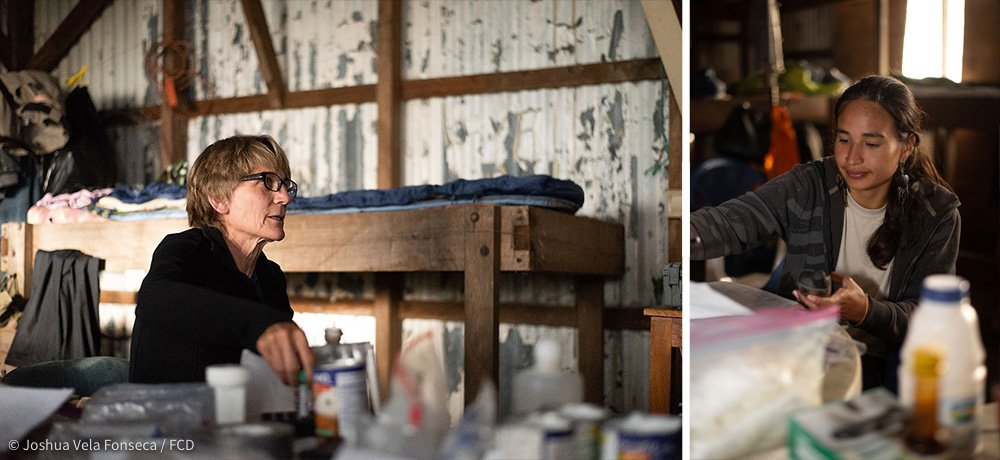
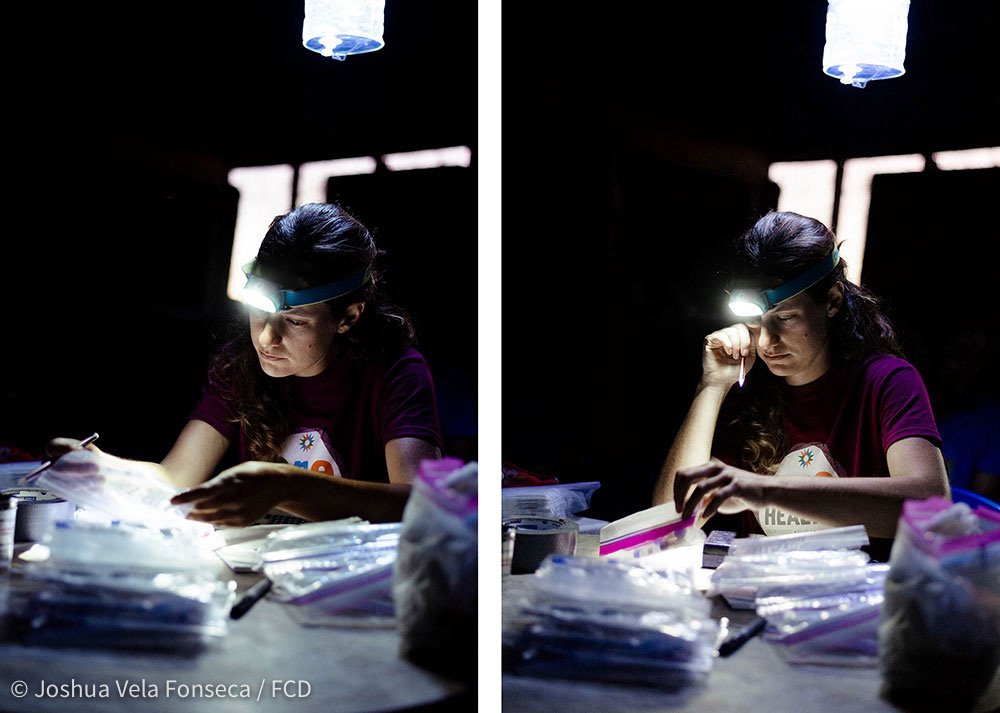
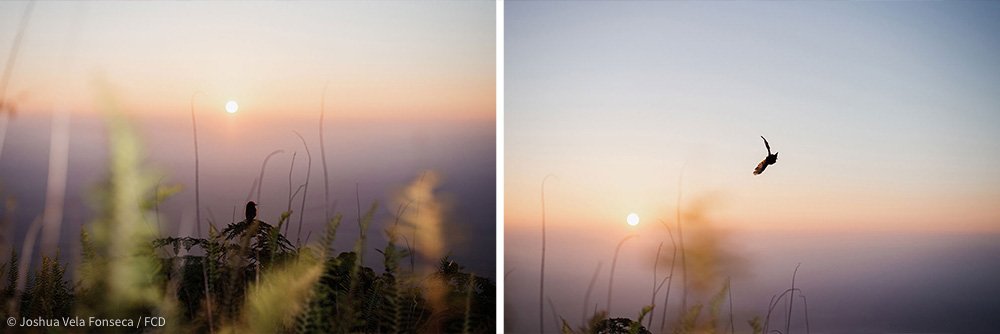
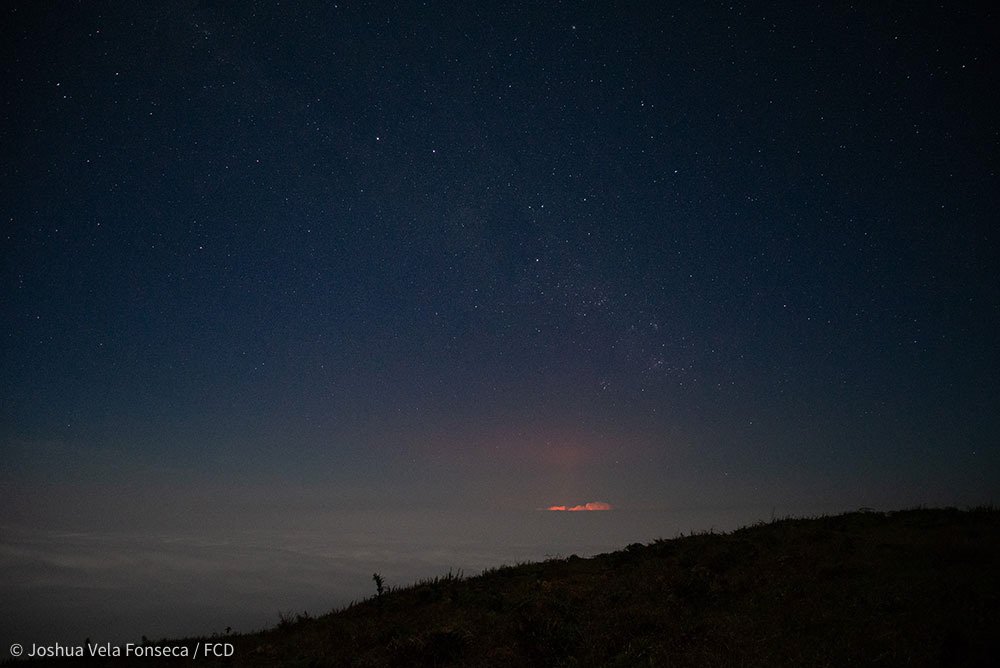
03_6.- DAY SIX
The last day of work was just as exciting as the previous five. We look for the tagged tortoises using telemetry and end up in a low, humid area full of large males.
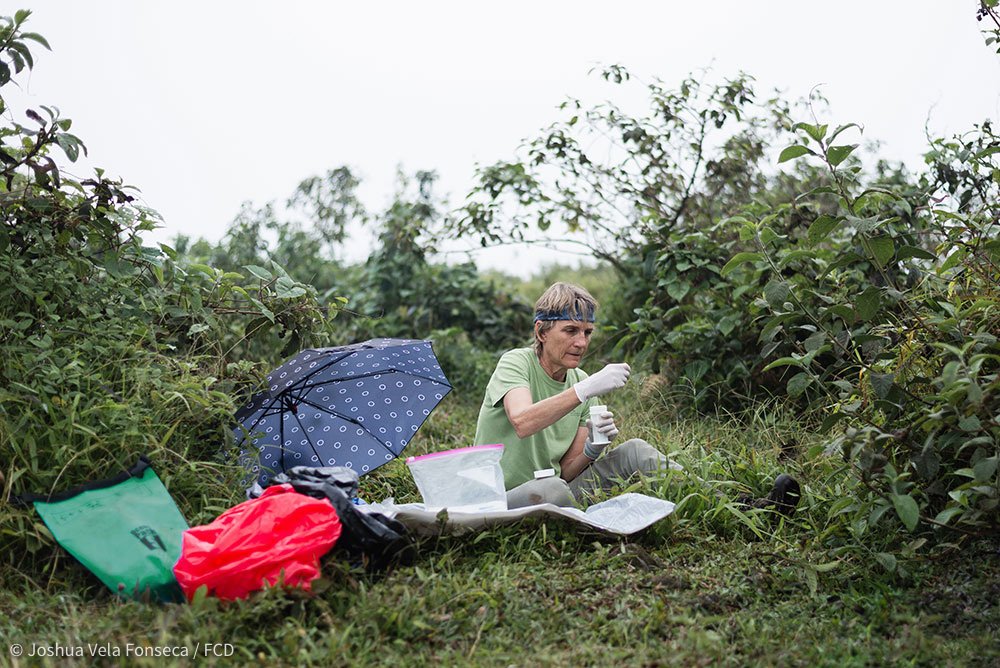
There, the team took the samples of the last tortoise, the # 70. And marked it with water-based acrylic paint, like the rest, to identify them.
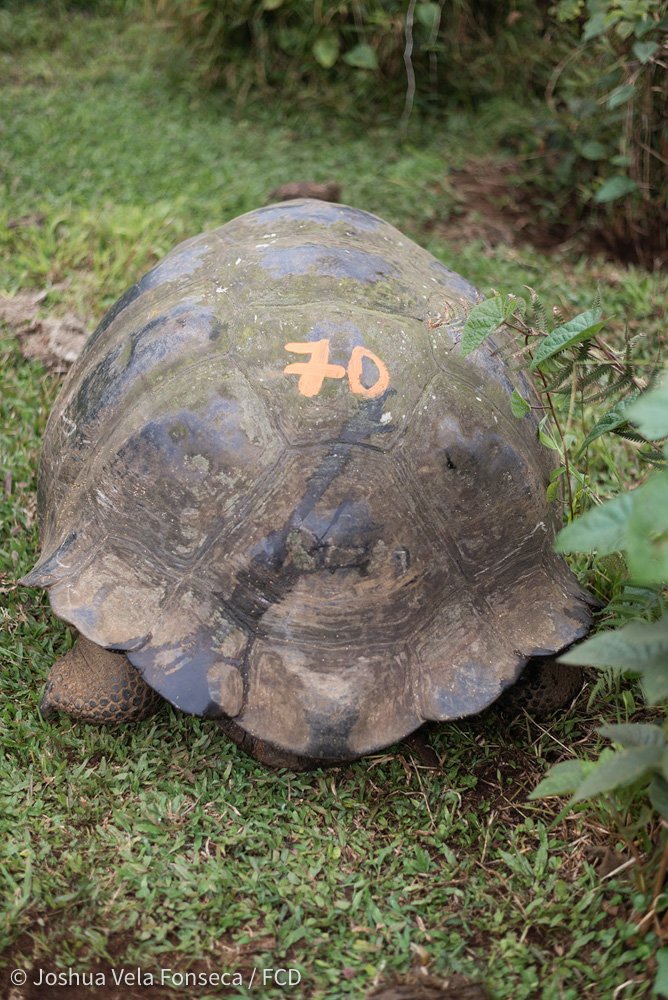
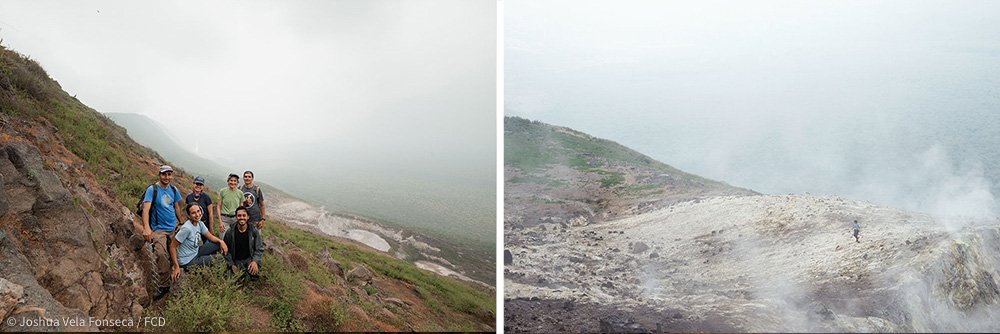
03_7.- DAY SEVEN
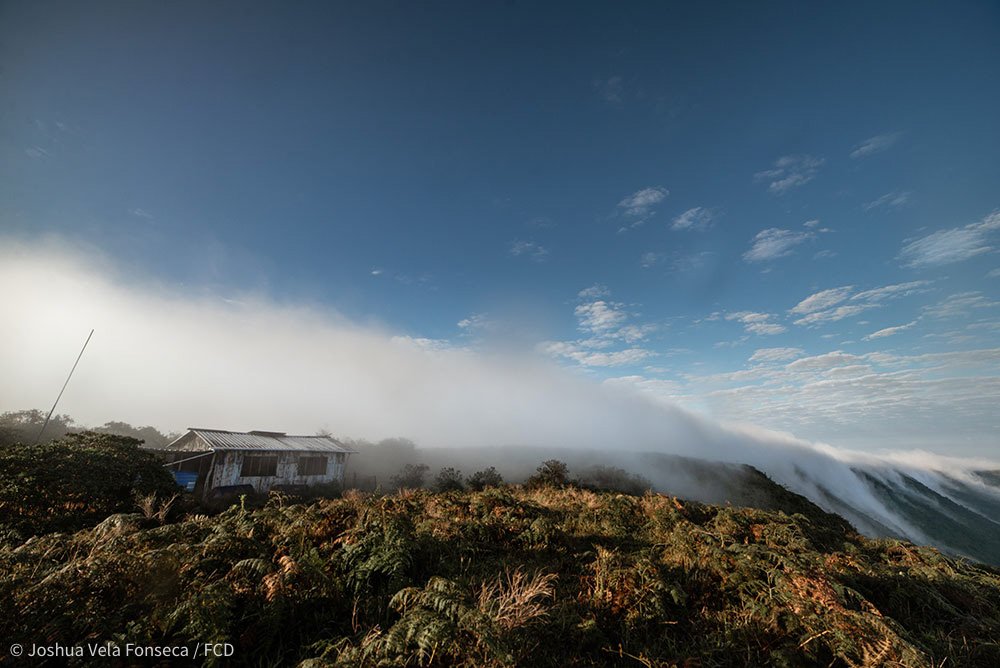
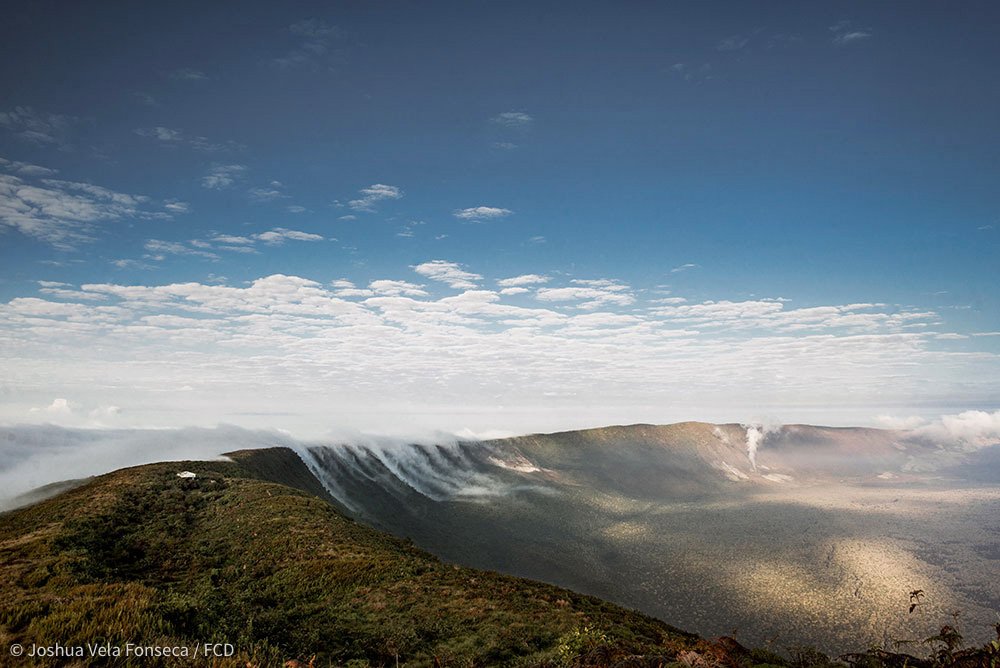
In contrast with the ascent, going down took us only 3 hours and 45 minutes.
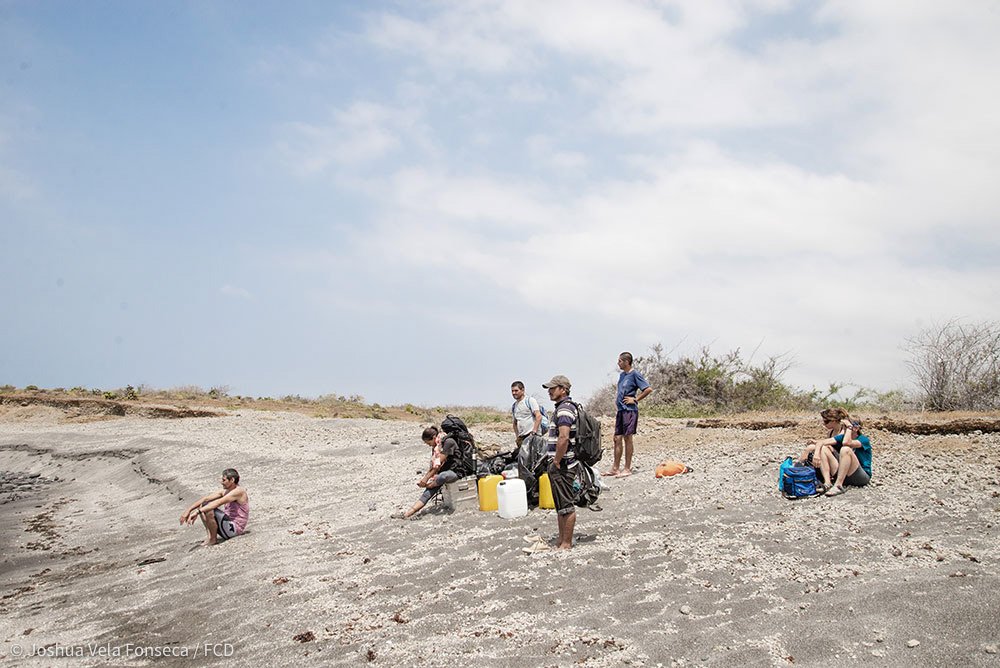
04.- AT HOME
Back home, and with Wifi, I found myself bombarded with notifications again. A week without internet makes you go back and see the amount of time you really spend on your devices and the impact they have on your life.
But Smartphones and social networks also help us to share and leave a virtual footprint. Our presence has managed, for the first time, a state of permanence. The spoken language, the written texts, paintings, and analogous photographs, among other ways of documenting, are fragile and time is their biggest threat. But with the servers and their backups, we are continually writing the history on the web in a permanent way.
Photography has one of the most critical roles, being that they require just a few seconds of our time, and its effectiveness in transmitting a message rests on the millions of users who consume images every day. Today we are all photographers, even without knowing it. An average person takes 50 photos a week and is exposed to more than 5,000 images a day. Also, the photographic equipment stopped being a barrier. For example, an iPhone not only has one, but three cameras; two rear 12MP f1.8 and f2.8, and a front 7MP f2.2 with a variety of focal lengths, depth control or Bokeh, greater detail and sharpness in low light conditions, video 4k, HDR, etc. features at our fingertips. Thanks to this, many professional photographers use their cell phones as their primary cameras and the phrase "The best camera is the one that fits your pocket" has become popular.
From my point of view, the role of a professional photographer comes from his conscious and dedicated practice; photography opens a new world to you, you begin to see moments and details that would have been unnoticed before and puts you in a constantly-seeking mode.
“Photography is like skateboarding in that you start to see the world in a specific visual language. A curb isn’t just something you step up, but once you skate, it becomes an important symbol. I like being able to use photography as a way to recontextualize moments of our world.”
-Andrew Kodama
In my case, photography comes from my urge to transmit messages efficiently. I am a strong advocate that environmental problems should be our most significant concern since they not only have social, economic, political and cultural repercussions but also risk life as such.
So, the next time you take a picture don't think about the "likes" or followers, instead ask yourself: "What do I really want to say?" or "How do I want the story to be written today?"
If you are interested in learning more about volunteering in Galapagos, please visit our volunteer vacancies.


-->





